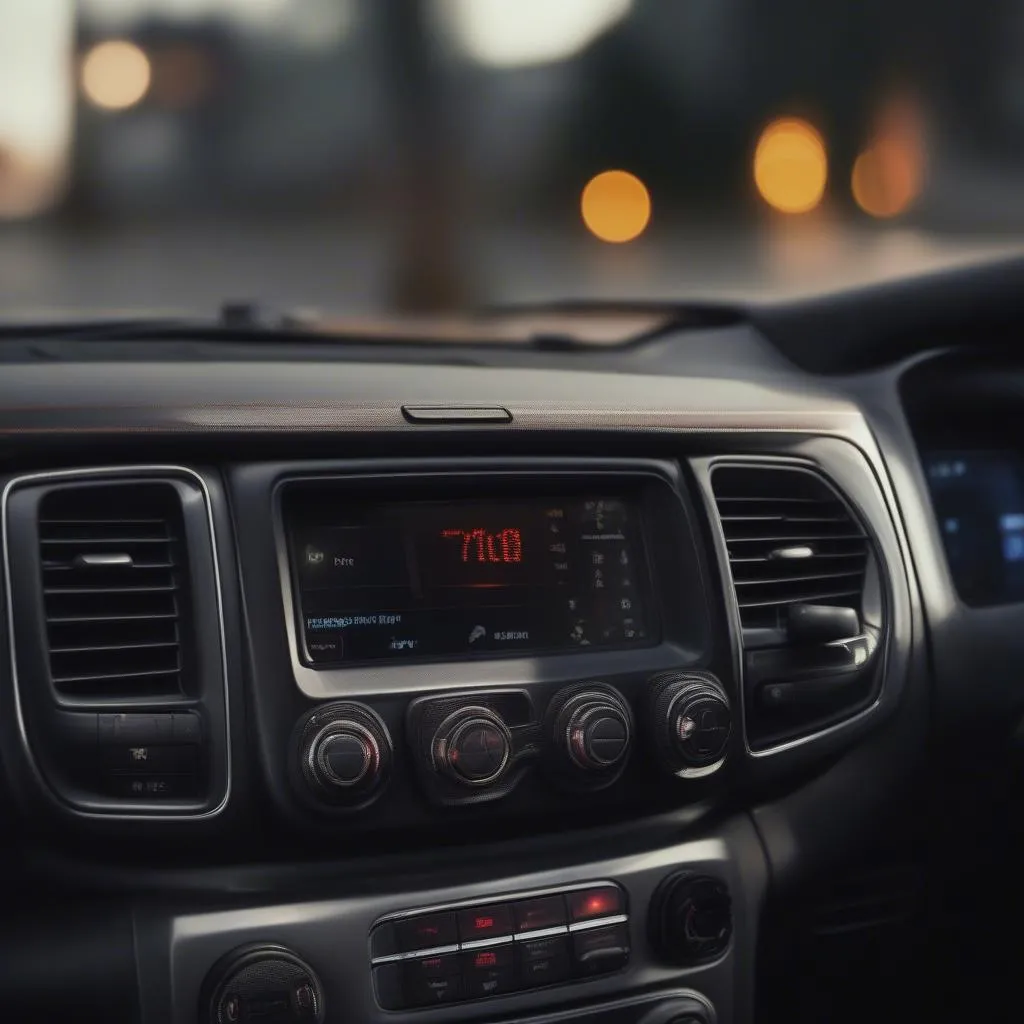The brake light warning on your 2006 Nissan Altima dashboard is a safety-critical issue that should never be ignored. This warning light typically illuminates when there’s a problem with your brake light system, signaling that one or more of your brake lights might be out. This article will delve into the common causes of this warning light on a 2006 Nissan Altima and guide you through diagnosing and fixing the issue.
Understanding the Brake Light Warning System
Your Nissan Altima, like most modern vehicles, is equipped with a sophisticated electrical system that constantly monitors crucial components, including the brake lights. When the system detects a fault, like a burnt-out bulb, it triggers the brake light warning on your dashboard.
Common Causes of a Brake Light Warning on a 2006 Nissan Altima
Several factors can cause the brake light warning to light up on your 2006 Nissan Altima. Here are the most common culprits:
1. Burnt-Out Brake Light Bulbs
This is the most frequent reason for the brake light warning. Brake light bulbs have a limited lifespan and will eventually burn out.
How to Check:
- Visual Inspection: Have a friend press the brake pedal while you visually inspect each brake light at the back of your car.
- Bulb Replacement: If a bulb is burnt out, replace it with a new one of the same type. Refer to your owner’s manual for the correct bulb specifications.
2. Blown Fuse
The brake light circuit is protected by a fuse in your car’s fuse box. If this fuse blows, it can disrupt power to your brake lights, triggering the warning light.
How to Check:
- Locate the Fuse Box: Consult your owner’s manual to find the fuse box location and identify the specific fuse related to the brake lights.
- Inspect the Fuse: Carefully remove the fuse and check for a broken wire inside, indicating a blown fuse. Replace the blown fuse with a new one of the same amperage rating.
3. Faulty Brake Light Switch
The brake light switch is located above the brake pedal and is responsible for sending a signal to activate the brake lights when the pedal is pressed. A malfunctioning switch can disrupt this signal, causing the warning light.
How to Check:
- Locate the Switch: The brake light switch is typically located under the dashboard, attached to the brake pedal arm.
- Testing the Switch: Testing this switch often requires some mechanical knowledge and may be best left to a professional mechanic.
4. Wiring Issues
Over time, the wiring in your car can become damaged or corroded, leading to electrical issues that could affect the brake light circuit. This can be a more complex issue to diagnose and repair.
How to Check:
- Visual Inspection: Carefully inspect the wiring harness that runs to the rear brake lights for any signs of damage, wear, or corrosion.
- Professional Diagnosis: Diagnosing and repairing wiring issues often requires specialized tools and expertise, so it’s advisable to seek assistance from a qualified mechanic.
Can I Still Drive With the Brake Light Warning On?
While your car may technically still drive with the brake light warning on, it’s highly discouraged. Driving without functioning brake lights is incredibly dangerous, as it significantly reduces your visibility to other drivers, especially at night or in low-light conditions. This poses a serious safety hazard not only to you but also to other road users.
Remote Diagnostics and Programming: A Modern Solution
Advances in automotive technology now offer remote diagnostic and programming services for certain car issues. While not all brake light problems can be fixed remotely, qualified technicians can often diagnose the issue and recommend solutions, including potential software updates or resets, remotely. This can save you time and potentially money on unnecessary garage visits.
Resolving a Brake Light Warning on a 2006 Nissan Altima
The first step is always to identify the root cause of the warning. Start with the simpler checks like inspecting the bulbs and fuses. If those checks don’t reveal the issue, it’s highly recommended to consult a qualified mechanic, especially for potential problems like a faulty brake light switch or wiring issues.
Conclusion
Addressing a brake light warning on your 2006 Nissan Altima is crucial for your safety and that of other road users. By understanding the common causes and following the suggested checks, you can effectively diagnose and potentially fix the problem. Remember, when in doubt, seeking help from a professional mechanic is always the safest option.
FAQs
1. How much does it cost to replace a brake light bulb?
Brake light bulbs are relatively inexpensive, often costing between $5 to $15 per bulb.
2. Where can I find the correct fuse for my Nissan Altima’s brake lights?
Your owner’s manual will specify the location of the fuse box and the correct fuse type and amperage for your brake lights.
3. Can a bad brake light switch cause both brake lights to fail?
Yes, a faulty brake light switch can cause all brake lights to stop working since it controls the signal that activates them.
4. How long can I drive with a blown brake light fuse?
You should replace a blown brake light fuse as soon as possible. Driving without functioning brake lights is highly dangerous and illegal in most places.
5. Is it difficult to replace the brake light switch myself?
Replacing a brake light switch can be moderately challenging and may require some mechanical skill. If you’re not comfortable working on your car, it’s best to have a professional handle the replacement.

